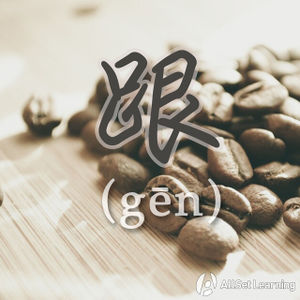Difference between revisions of "Basic comparisons with "yiyang""
m (Text replacement - ". </span>" to ".</span>") |
|||
| Line 22: | Line 22: | ||
*北京 的 天气 <em>和</em> 上海 不 <em>一样</em>。<span class="pinyin">Běijīng de tiānqì <em>hé</em> Shànghǎi bù <em>yīyàng</em>.</span><span class="trans">The weather in Beijing and the weather in Shanghai are not alike.</span> | *北京 的 天气 <em>和</em> 上海 不 <em>一样</em>。<span class="pinyin">Běijīng de tiānqì <em>hé</em> Shànghǎi bù <em>yīyàng</em>.</span><span class="trans">The weather in Beijing and the weather in Shanghai are not alike.</span> | ||
*这 个 词 的 意思 <em>和</em> 那 个 词 <em>一样</em> 吗?<span class="pinyin">Zhège cí de yìsi <em>hé</em> nàge cí <em>yīyàng</em> ma?</span><span class="trans">Is the meaning of this word and that word the same?</span> | *这 个 词 的 意思 <em>和</em> 那 个 词 <em>一样</em> 吗?<span class="pinyin">Zhège cí de yìsi <em>hé</em> nàge cí <em>yīyàng</em> ma?</span><span class="trans">Is the meaning of this word and that word the same?</span> | ||
| − | *美国 文化 <em>跟</em> 中国 文化 不 <em>一样</em>。<span class="pinyin">Měiguó wénhuà <em>gēn</em> Zhōngguó wénhuà bù <em>yīyàng</em>.</span><span class="trans"> | + | *美国 文化 <em>跟</em> 中国 文化 不 <em>一样</em>。<span class="pinyin">Měiguó wénhuà <em>gēn</em> Zhōngguó wénhuà bù <em>yīyàng</em>.</span><span class="trans">American culture and Chinese culture are not the same.</span> |
*啤酒 <em>和</em> 葡萄酒 的 味道 <em>一样</em> 吗?<span class="pinyin">Píjiǔ <em>hé</em> pútaojiǔ de wèidào <em>yīyàng</em> ma?</span><span class="trans">Do beer and red wine taste the same?</span> | *啤酒 <em>和</em> 葡萄酒 的 味道 <em>一样</em> 吗?<span class="pinyin">Píjiǔ <em>hé</em> pútaojiǔ de wèidào <em>yīyàng</em> ma?</span><span class="trans">Do beer and red wine taste the same?</span> | ||
Revision as of 08:30, 15 June 2017
-
Level
-
Similar to
-
Used for
-
Keywords
Along with 比 (bǐ) and 没有 (méiyǒu), 一样 (yīyàng) is another way to make basic comparisons. However, 一样 (yīyàng) is used to express that two things are the same in some way.
Contents
Basic Usage
Structure
The simple structure is used for stating that two things are the same:
Noun 1 + 跟 / 和 + Noun 2 + 一样
Examples
- 我 和 你 一样。I am the same as you.
- 他 的 性格 跟 他 妈妈 一样。 He has the same personality as his mom.
- 北京 的 天气 和 上海 不 一样。The weather in Beijing and the weather in Shanghai are not alike.
- 这 个 词 的 意思 和 那 个 词 一样 吗?Is the meaning of this word and that word the same?
- 美国 文化 跟 中国 文化 不 一样。American culture and Chinese culture are not the same.
- 啤酒 和 葡萄酒 的 味道 一样 吗?Do beer and red wine taste the same?
一样 (yīyàng) with Adjectives
Structure
To add an adjective into the mix, just place it after 一样 (yīyàng):
Noun 1 + 跟 / 和 + Noun 2 + 一样 + Adj.
This describes Noun 1 as being as adjective as Noun 2.
Examples
- 你家 跟 我家 一样 大。 Your house is just as big as mine.
- 她 和 她 哥哥 一样 高。 She and her older brother are equally tall.
- 你 的 头发 和 我的 头发 一样 长。You hair is as long as mine.
- 这里 的 天气跟 我 老家 一样 舒服。The weather here is just as comfortable as my hometown's.
- 你 跟 老板 一样 忙 吗?Are you as busy as the boss is?
There is also a similar but more advanced usage of this pattern that uses 像 (xiàng).
See also
Sources and further reading
Books
- Chinese: An Essential Grammar, Second Edition (p. 55) →buy
- Integrated Chinese: Level 1, Part 1 (3rd ed) (p. 244) →buy
- New Practical Chinese Reader 2 (新实用汉语课本2) (p. 108) →buy
Websites
- Yale Chinese Usage Dictionary: Usage of 跟 and 比



